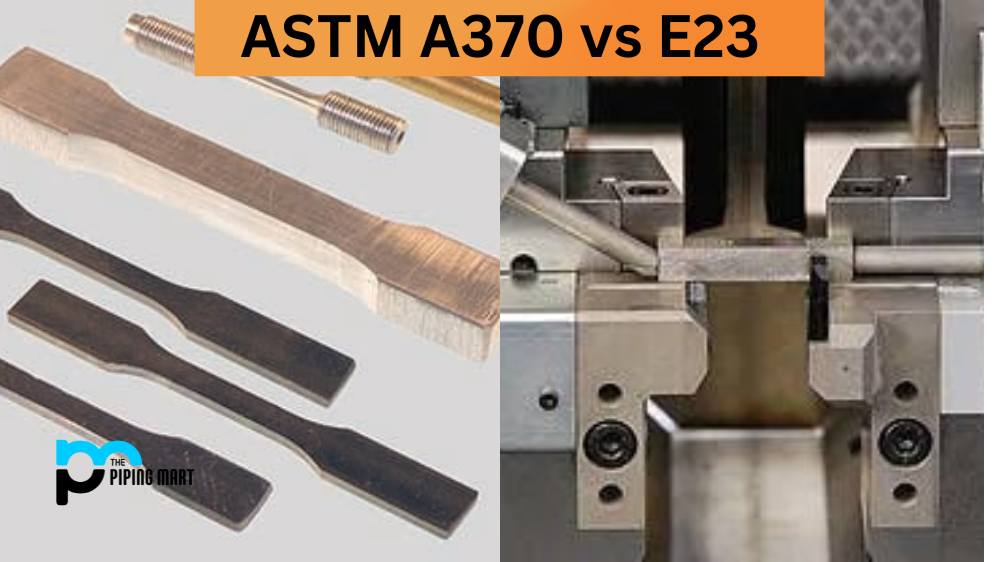Regarding mechanical testing of materials, ASTM standards provide guidelines that ensure accurate and reliable results. Two of the most commonly used ASTM standards for mechanical testing are A370 and E23. While these standards may seem similar, significant differences are important to understand before conducting mechanical testing. This blog post will examine the differences between ASTM A370 and E23 and when each standard should be used.
What is ASTM A370?
ASTM A370 is a standard that establishes the tensile, bend, compression, and impact tests for metal products. This standard is widely used in the aerospace, automotive, and construction industries. The tensile test is a common mechanical test used to determine the strength and ductility of materials. This test involves gradually increasing force to a uniform specimen until it breaks. The ASTM A370 standard provides detailed guidelines for conducting this test. The bend test measures the ductility of a material by bending it to a certain angle without cracking. The compression test determines the strength of a material under compression. The impact test measures the toughness of a material by subjecting it to a sudden impact.
What is ASTM E23?
E23, on the other hand, is an ASTM standard for conducting fracture toughness testing. This standard is used to determine the resistance of a material to fracture. Fracture toughness testing involves creating a crack in a material and measuring the stress required to propagate the crack. E23 provides guidelines for testing both metals and non-metals. This standard is widely used in the aviation industry for testing aircraft components, such as wings and landing gear.
Difference Between ASTM A370 and E23
It is important to note that while ASTM A370 and E23 are both mechanical testing standards, they are not interchangeable. ASTM A370 is used for testing the strength and ductility of a material, while E23 is used for testing the material’s resistance to fracture. Using the right standard for mechanical testing can result in accurate results, leading to serious consequences in industries such as aviation and construction.
When deciding which standard to use for mechanical testing, it is important to consider the material’s specific properties and its intended application. For example, if the material is a metal component for use in the automotive industry, ASTM A370 would be the appropriate standard for testing. However, if the material is a non-metal component for use in the aviation industry, E23 would be the most appropriate standard.
In addition to choosing the appropriate standard for mechanical testing, it is also important to ensure the testing is conducted according to the guidelines outlined in the chosen standard. Follow the guidelines to ensure accurate results are accurate, which can have serious consequences in industries where safety is paramount, such as aviation and construction.
Conclusion
In conclusion, ASTM A370 and E23 are two important standards for the mechanical testing of materials. While the two standards may seem similar, they are not interchangeable, and it is important to understand their differences. Choosing the appropriate standard for mechanical testing, based on the properties of the material being tested and its intended application, is crucial for ensuring accurate and reliable results. Following the guidelines outlined in the chosen standard is equally important to ensure accurate testing and to maintain safety in industries where the consequences of inaccurate results can be severe.

Meet Bhavesh, a seasoned blogger with a wealth of knowledge and experience. From metal products manufacturing to retail, Bhavesh has a diverse background in various industries and is dedicated to sharing his insights and expertise with readers.




